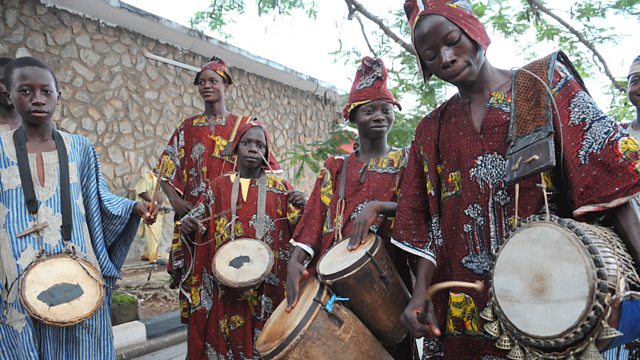
The rhythmic beats of talking drums have moved through West Africa for centuries, forming a unique and intricate language that transcends traditional barriers. Used by various ethnic groups across the region, these drums serve as more than just musical instruments; they are a sophisticated form of communication that mimics the tonal patterns of speech. The ability to transmit messages across long distances has made talking drums an indispensable component of traditional storytelling and ceremonial practices, enriching the cultural tapestry of West Africa.
Historical Significance:
The origins of talking drums can be traced back to ancient West African civilizations, where these instruments were crafted with meticulous care and played a pivotal role in community life. Historically, different ethnic groups such as the Yoruba, Igbo, and Ashanti have developed their unique variations of talking drums, each contributing to the rich diversity of this oral communication tradition.
Construction and Design:
Talking drums are typically made from wood and covered with animal hides, such as goat skin. Their hourglass shape allows for a variable tension on the drumheads, enabling the production of a wide range of tones. The use of cords or leather thongs further helps in adjusting the pitch. The intricate design of these drums allows skilled drummers to produce nuanced and expressive sounds that mirror the intonations of spoken language.
Mimicking Tonal Patterns:
What sets talking drums apart is their remarkable ability to mimic the tonal patterns of speech. Skilled drummers can replicate the nuances of their native languages, conveying not only words but also emotions and intentions. This mimicry is achieved by manipulating the tension of the drumheads, altering the pitch and tone to match the cadence of spoken words. The result is a rhythmic conversation that transcends the limitations of distance.
Long-Distance Communication:
The primary function of talking drums is their capacity to transmit messages across considerable distances. In regions where dense forests, vast savannahs, or rugged terrains pose challenges to direct communication, talking drums have been invaluable. Villages separated by miles can exchange information, announce events, or even share stories through this ingenious means of long-distance communication. The drumbeats travel farther than the human voice, allowing for efficient communication in a variety of contexts.
Cultural Significance in Storytelling and Ceremonies:
Talking drums are woven into the fabric of West African culture, playing a central role in traditional storytelling and ceremonial practices. Griots, or oral historians, utilize these drums to recount epic tales, preserving the history and traditions of their communities. Ceremonies, such as weddings, funerals, and festivals, are infused with the rhythmic beats of talking drums, adding a layer of cultural richness to the proceedings.
Preservation of Cultural Heritage:
In the face of modernization and technological advancements, talking drums continue to be a resilient symbol of West African cultural heritage. Efforts to preserve and promote the art of talking drum playing are essential for ensuring that future generations can appreciate the beauty and significance of this unique form of communication.
Talking drums stand as a testament to the ingenuity and cultural richness of West Africa. Beyond their musical allure, these drums serve as a living language, connecting communities across vast distances. In a world dominated by rapid communication technologies, the ancient art of talking drums persists as a reminder of the enduring power of tradition and the importance of preserving the unique cultural expressions that define a region’s identity.
